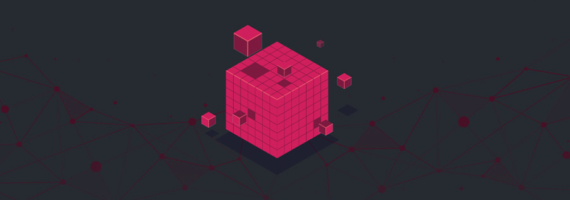Articles, posts and news about microservice architecture.
Microservice Architecture
Filter by category:
All Series Data Migration Data Storage NoSQL Database Microservice Architecture Database SecurityPlease feel free to browse and read about Microservice Architecture in the articles on this page. Take a peek at the upcoming events, see some use cases, read industry reports, or listen to our most recent podcasts.

Microservices Architecture – A Little History
10 minutesMicroservices - What is it?
What are Microservices?
Microservices are applications composed of several independently deployable services. Every microservice controls its data. It doesn’t care about how other components are going to use that data. This architecture gives you greater agility in rolling out new application features.
With a microservices architecture, applications can be broken down and developed through a collection of loosely coupled services that allow continuous development without having to redeploy the entire application.
The emergence of IoT, Geo distributed distribution, minimizing latency across international boundaries, distributed data, continuous deployment, and the need for applications to use diverse data types and models for different functions forces you to go beyond a monolith architecture.
To support the new standards, databases will have to be easy to use, simple to set up, multi-model, and enable seamless polyglot persistence to support microservice DevOps teams. By nature, microservice applications are complex, but you can reduce that complexity at the database layer to manage it throughout your application.
RavenDB Cloud Hosted DBaaS
Spin up a remote database cluster in minutes with RavenDB Cloud.
Try out a Hosted Database as a Service (DBaaS) that covers all of your back-end chores, freeing you up to focus primarily on what to do with your data. Using RavenDB Cloud, you can enjoy all of the features RavenDB offers without having to jump through hoops to get everything set up and secure.
- Try RavenDB on Amazon Web Services (AWS), Microsoft Azure, or Google Cloud Platform (GCP).
- Enjoy automatic instance, setup, maintenance, and upgrades.
- Protect your data in transit and at rest with top-level encryption. Maintain your data at all times with automatic failover, data backups, and X.509 authentication and authorization.
- RavenDB Cloud is available in free, development, and production level tiers. You also can create your own custom plan.
- Expand your database cluster to every corner of the world. Keep latency low and performance high to all of your users at any location.
Advantages of Microservices
- New features can be released when ready
- Individual components can be scaled as needed
- You can release one isolated service without having to test or release another
- The same microservice can be running in multiple locations, so your app has resiliency. If one service goes down, it’s “twin” can come to the forefront.
- Developers can code for different services using different languages
- Microservices enable you to employ both relational and non-relational solutions in your application efficiently letting you enable a polyglot database system.
Database Requirements to Maintain a Microservices Architecture
Most databases can fit into a microservices architecture one way or another. The idea database for such a system is one that includes the following features:
- Schemaless. You can change the foundation of your data model multiple times. Changing the schema once you are in production is baked into the cake, so you need a database that is as flexible with your schema as can be.
- ETL Replication. To keep services independent from one another, you need their data to stand on its own. This requires a native ETL tool that will ferry information to and from each service.
- Supports Transactional Data (ACID). In a microservices architecture, at least one of the services will need ACID compliance. You need to have the ability to process fully transactional operations on demand.
- Easy to set up and easy to use. Microservice teams are small. Even if they are part of a large app or a large organization, the groups are small, so they need a database that requires as little work as possible.
Managing Complexity with the Right Microservices Data Solution
Microservices are complex. You need a database that can manage complexity, so you are free to scale out at the application level. To keep things simple at the database layer, your database must be:
Multi-model. Different services will want to take in various forms of data. The ability to break apart your services into graph data, document data, key-value types, time-series, and more is at the heart of agility and scalability.
Non-relational. The complexity of tables, joins, and piecing together bits and pieces of data fragments scattered throughout multiple servers across the world can make your application very complicated and prone to error. Non-relational databases eradicate the use of putting together tables to serve a query and keeps complexity to a minimum.
Fully Loaded. MapReduce, full-text search, automatic caching, GUI, versioning, even a storage engine are things that you might have to add on to your database. A database with all of this built-in reduces your need for additional moving parts.
Distributed. A distributed database has the advantages of not needing to be chained to a single server. Microservices are distributed and used primarily on the cloud. A database built to be distributed is the ideal fit for both.
From Monolith to Microservices: Scaling Out Your Architecture
Data is the lifeblood of a business, and your database is the heart that pumps it to the entire body of the organization. As everything expands, how do you efficiently reorganize the structure of your systems to make sure everything is running with maximum efficiency and minimum complexity?
This webinar talks about the evolution of a monolith architecture to microservices, and the benefits of localizing roles in your IT systems to microsystems to redistribute complexity while boosting productivity, efficiency, and capacity.
- Microservices as the Solution to the Monolith Challenges
- Monolithic Architecture vs Microservices: Advantages and Challenges
- Core Principles of Microservices Databases

